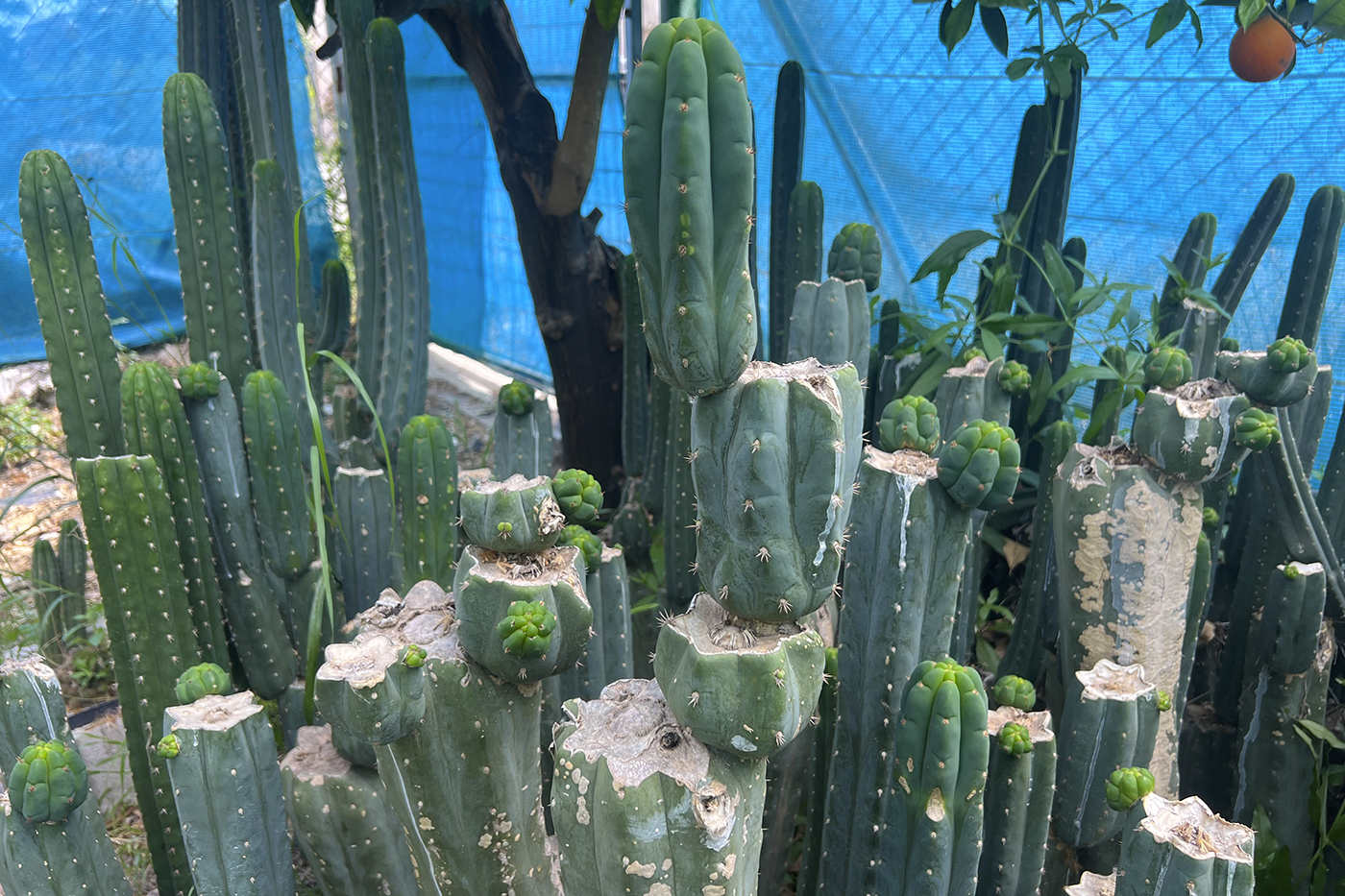Cacti, including the hardy Trichocereus, are not immune to fungal diseases that can threaten their health. These diseases, often caused by excess moisture or poor ventilation, can damage roots, stems, and leaves. Knowing how to prevent and treat fungal infections is essential for maintaining a thriving cactus.
In this guide, we'll walk you through the most common fungal diseases affecting cacti and how to effectively prevent and treat them.
Common Fungal Diseases in Cacti
Fungal infections can impact both the roots and the visible parts of a cactus. Here are the most frequent fungal diseases that affect Trichocereus and other cacti:
1. Root Rot (Phytophthora and Fusarium)
Identification
Root rot is one of the most lethal fungal diseases for cacti, typically caused by fungi like Phytophthora and Fusarium. It usually starts at the roots and moves upward, turning the base of the cactus brown or black, and softening the tissue as it decays.
Treatment
- Prevention: Use a fast-draining soil mix and avoid overwatering.
- Cure: Remove the infected cactus, cut away the rotted areas, apply a systemic fungicide, and replant in fresh, well-draining soil.
2. Anthracnose (Colletotrichum spp.)
Identification
Anthracnose manifests as black or brown spots on the cactus stems, eventually creating dead patches if untreated. It thrives in warm, moist conditions, especially during periods of high humidity or rain.
Treatment
- Prevention: Ensure good air circulation and avoid overwatering.
- Cure: Remove infected areas and treat with a broad-spectrum fungicide.
3. Powdery Mildew (Oidium spp.)
Identification
Powdery mildew appears as a white, powdery coating on the surface of the cactus, blocking photosynthesis and eventually weakening the plant.
Treatment
- Prevention: Place the cactus in an area with proper ventilation and light. Avoid splashing water on the stems.
- Cure: Use a sulfur-based fungicide or an organic treatment like diluted baking soda.
4. Black Spot (Alternaria spp.)
Identification
Black spots, caused by Alternaria, create dark patches on the cactus, often spreading quickly in humid conditions. If left untreated, these spots can weaken the plant’s structure.
Treatment
- Prevention: Limit humidity around the cactus and ensure it receives enough sunlight.
- Cure: Apply a broad-spectrum fungicide and prune away severely affected areas.
Preventing Fungal Diseases in Cacti
Prevention is always better than treatment when it comes to cacti and fungal infections. Follow these tips to protect your Trichocereus from common fungal diseases:
- Choose a Well-Draining Soil: Always plant cacti in soil designed for succulents, combining ingredients like sand, pumice, or perlite to ensure proper drainage.
- Monitor Watering: Overwatering is the leading cause of fungal diseases in cacti. Only water when the soil is completely dry, particularly in colder months.
- Ensure Good Air Circulation: Fungus thrives in damp, stagnant air. Whether indoors or outdoors, make sure your cactus is in a well-ventilated area.
- Use Preventative Fungicides: In climates prone to humidity or rain, consider applying a light fungicide treatment as a preventative measure, especially during the rainy season.
Organic Treatment Methods for Fungal Infections
If you prefer organic solutions, there are several ways to combat fungal infections without using chemicals:
- Neem Oil: Neem oil is a natural fungicide that can help treat powdery mildew, anthracnose, and other fungal infections. Dilute it with water and spray it directly on the infected area.
- Baking Soda Solution: A simple mix of water and baking soda can help fight powdery mildew. Apply this solution to the affected parts to neutralize the fungus.
When to Take Action vs. Letting Your Cactus Recover
It’s important to know when to intervene and when to let your cactus recover on its own. For minor infections or small spots, improving the growing conditions (more light, better ventilation) may allow the plant to heal naturally. However, if the infection spreads quickly or affects a large portion of the cactus, it’s critical to apply fungicides or prune infected areas immediately.
Conclusion
Fungal diseases can be devastating for Trichocereus and other cacti, but with proper care and prevention, you can protect your plants from severe infections. By focusing on well-draining soil, controlled watering, and ensuring a healthy growing environment, you’ll reduce the risk of fungal problems significantly. With prompt treatment, you can tackle infections early and keep your cactus thriving for years to come.




